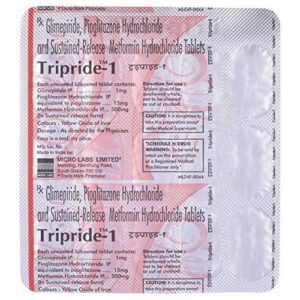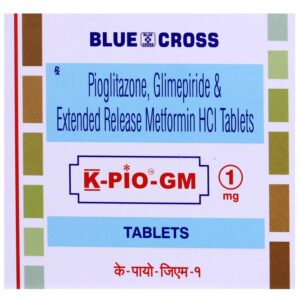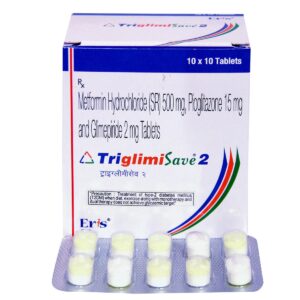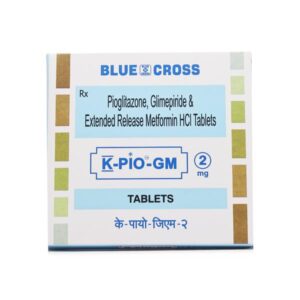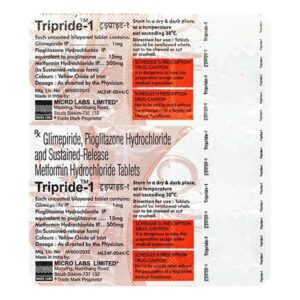GLIMEPIRIDE + PIOGLITAZONE
Glimepiride: Glimepiride is an oral medication commonly prescribed for the treatment of type 2 diabetes mellitus. It belongs to the class of drugs known as sulfonylureas.
The primary function of Glimepiride is to lower blood sugar levels by stimulating the release of insulin from the pancreas. It works by binding to ATP-sensitive potassium channels on the pancreatic beta cells, leading to the opening of calcium channels. This promotes insulin secretion, which helps regulate blood glucose levels.
The recommended starting dose of Glimepiride is usually 1 to 2 mg per day, taken with breakfast or the first main meal of the day. The dosage can be adjusted by your healthcare provider based on individual response and blood glucose monitoring. It is important to follow the prescribed dose and instructions given by your doctor.
As with any medication, Glimepiride may have some side effects. Commonly reported side effects include hypoglycemia (low blood sugar), weight gain, dizziness, headache, and gastrointestinal disturbances like nausea, vomiting, or diarrhea. Less commonly, it may cause allergic reactions, skin rash, or liver problems.
It is essential to monitor blood sugar levels regularly while taking Glimepiride, as it may increase the risk of hypoglycemia. Proper diabetes management, including a balanced diet, regular exercise, and close monitoring of blood sugar levels, is crucial when using Glimepiride.
Consult your healthcare provider for personalized information about Glimepiride, as they can provide the most accurate and up-to-date information considering your specific condition and needs.
Pioglitazone: Pioglitazone is a medication commonly used to treat type 2 diabetes mellitus. It belongs to a class of drugs known as thiazolidinediones. Pioglitazone helps to improve insulin sensitivity and control blood sugar levels.
The mechanism of action of pioglitazone involves activating peroxisome proliferator-activated receptor-gamma (PPAR-gamma), a nuclear receptor found in adipose tissue, skeletal muscle, and liver. Activation of PPAR-gamma leads to increased insulin sensitivity, decreased hepatic glucose output, and enhanced glucose uptake into peripheral tissues.
The usual starting dose of pioglitazone is 15 to 30 mg once daily and can be increased up to a maximum of 45 mg per day if needed. It is typically taken orally, with or without food.
While pioglitazone can effectively lower blood sugar levels, it may also cause certain side effects. Common side effects include weight gain, edema (fluid retention), and mild hypoglycemia (low blood sugar). Other less common side effects may include anemia, headache, back pain, upper respiratory tract infection, and mild liver enzyme abnormalities.
There have been concerns about the potential risk of bladder cancer associated with pioglitazone use. However, studies have shown conflicting results, and the risk, if any, appears to be relatively low. It is important for patients taking pioglitazone to undergo regular check-ups and report any unusual symptoms or findings to their healthcare provider.
As with any medication, it is essential to consult a healthcare professional for personalized advice and monitoring when considering pioglitazone or any other drug.

